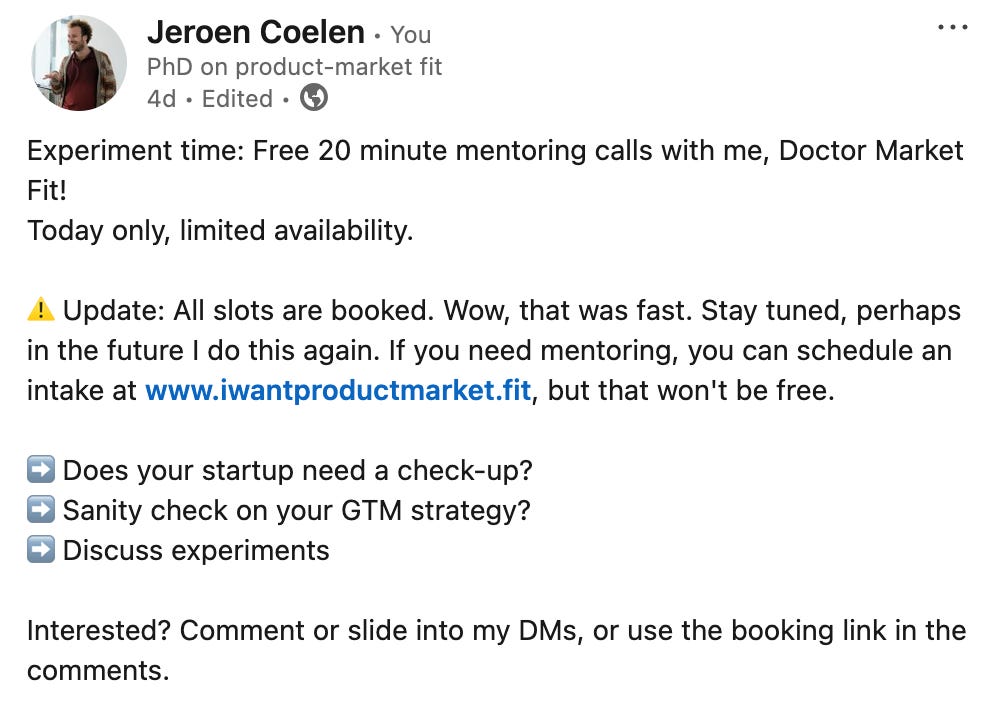I recently posted this on LinkedIn & Substack Notes:
And had six 20-minute calls with founders. Lots of fun!
I will do this again in the future; follow me on LinkedIn or Substack Notes to stay up to date.
But, I had some key takeaways relevant for everyone trying to get their next 10 customers.
9 tips on landing customers
If you are the CEO, you should do outreach and sales for at least 1-2 hours daily. Don’t worry that your MVP is not ready. You are building relations first. Not everyone likes sales, but you are the salesperson now—part of being an entrepreneur.
It might feel tempting, but generally it’s wise not to outsource sales before you have a successful playbook: you can’t outsource what you don’t understand. VCs likely won’t fund that.
A lot of people start with ads or cold outreach. Not a bad start, but sometimes it can be wise to run some experiments on other channels. Pick one that works best. Spaghetti channel marketing I call it: throw a bunch see what sticks best.
Trying any marketing channel, like building a product, requires some iterations. One failed experiment on, for instance, Google Ads, doesn’t prove that it will never work. Account for some learning time, educate yourself. With flow and bidding optimisation, I’ve seen teams get CAC down from €34 to €12 with optimising the UX flow and bidding strategies. This could be difference between being profitable and unprofitable for some of you.
You are likely trying to find people with problems. That’s great. Recognising hair-on-fire problems is crucial: it’s the best motivator to buy. If you're talking to people who just don’t get it, that’s a red flag for talking to the wrong people. It’s not them, it’s you ;).
Getting rejections on a sales pitch is harsh. I also hate it. But overly worrying about why they say no can be distracting. A little analysis is fine, but don’t forget to focus on why some others said yes. Do some interviews to learn the underlying reasons. With those insights, you can improve your future outreach.
If you are cheaper than your competition, targeting a different customer group than your competitors can unlock growth. These competitors’ customers apparently are fine with paying a high amount, and if switching is costly, they won’t buy you. Can you disrupt the incumbent by targeting non-users?
Expanding internationally is not a copy-paste activity. There will always be nuances and new things to learn. International expansion is not always the quick win it seems. If you are sure you want to do this, account for some learning time to get it right, easily 3-6 months. Sometimes, 50% growth in your own country with new channels is easier. Julia Diez has a great Substack on international expansion!
If you have some free trial users to learn, that’s great. However, free customers are not per se your beachhead market. If you fail to get your free trial segment into paid, you might be targeting the wrong people. Be open to abandoning these folks; you are building a business, not a charity. Just be friendly and open about it: “Thanks for your support so far, but as I’m building a business, I can’t offer this service for free anymore. The price will be X, I hope you understand.”





